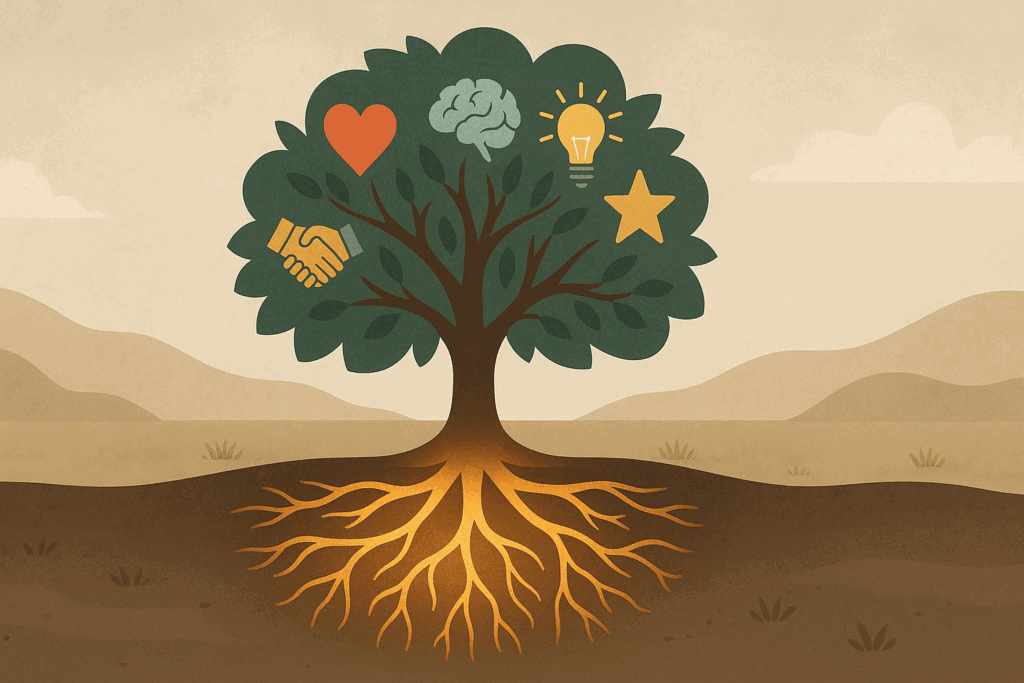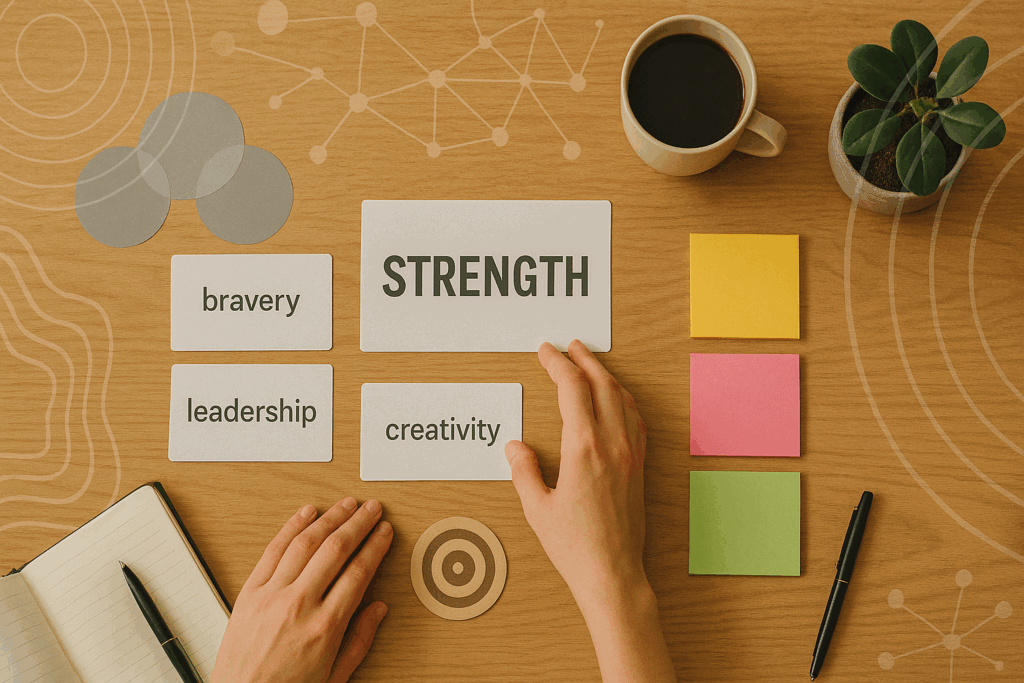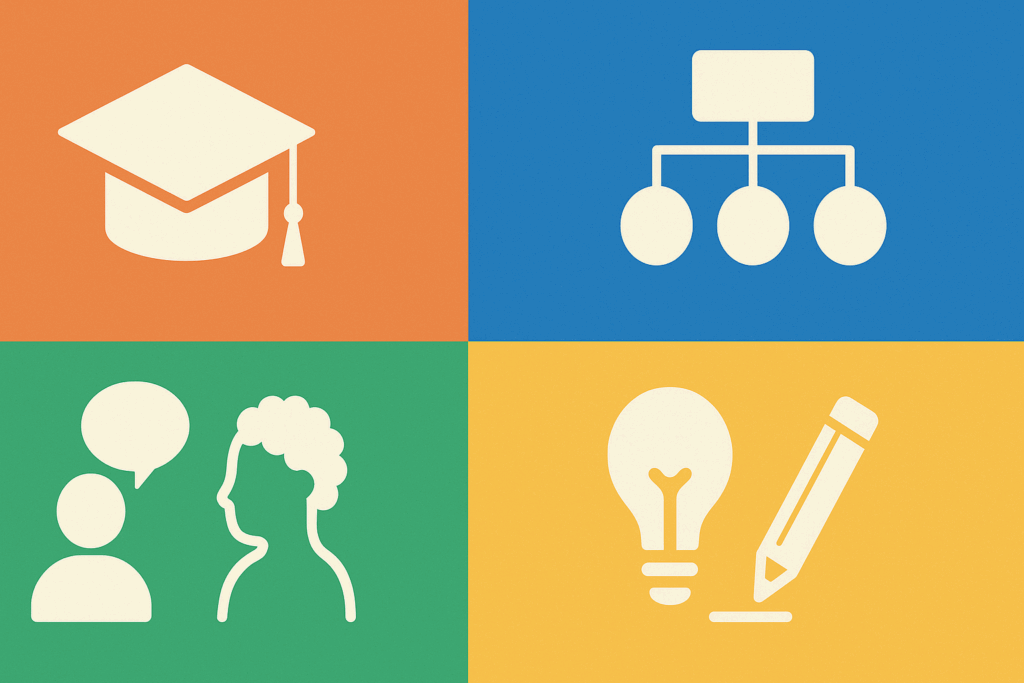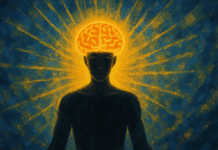In a world increasingly driven by performance metrics and constant comparison, harnessing one’s internal assets to develop personal excellence is both a revolutionary and practical step. Strengths based practice offers a compelling framework to achieve this by focusing on what individuals naturally do best rather than dwelling on their deficits. In educational, psychological, and professional contexts, this approach has steadily grown in prominence, influencing how motivation and discipline are cultivated and sustained. By centering the individual’s innate capabilities and leveraging them for growth, strengths based practice not only enhances self-efficacy but also lays the groundwork for enduring mental resilience, peak performance, and deeply rooted personal discipline. Through this article, we will examine how this empowering model creates meaningful shifts in motivation and mental performance, and how it can be integrated effectively to unlock one’s true mental edge.
You may also like: The Essential Mental Shift: How to Train Your Mind to Be Stronger for Peak Performance

Understanding the Foundations of Strengths Based Practice
Strengths based practice originates from positive psychology, a discipline that emphasizes the study of human flourishing. It represents a fundamental shift from traditional deficit-focused models that seek to fix weaknesses. Instead, it builds on the core belief that each person has a unique set of talents and abilities that, when identified and cultivated, can lead to exceptional outcomes. This philosophical reorientation has important implications for fields such as coaching, therapy, leadership, education, and personal development.
Unlike conventional approaches that might begin by diagnosing a problem or labeling a shortcoming, the strengths based model starts by identifying what is working well. This includes recognizing competencies, past successes, and even the individual’s subjective sense of vitality and engagement. From there, the strength based perspective encourages individuals to channel their energy into further developing these attributes. This not only enhances intrinsic motivation but also fosters greater engagement and long-term satisfaction.
The theoretical underpinnings of strengths based approach theory can be traced back to the work of pioneers such as Donald Clifton and Martin Seligman. Their contributions underscore the importance of positive reinforcement, affirming environments, and meaningful goals. The model suggests that when individuals are aligned with their strengths, they are more likely to enter a state of flow—a psychological state associated with high concentration, absorption, and performance. The practical implication is clear: by identifying and nurturing strengths, individuals are better equipped to perform at their best, with less burnout and more joy.

The Interplay Between Strengths and Motivation
Motivation is a multifaceted construct that encompasses intrinsic and extrinsic drivers. Traditional theories, such as Maslow’s hierarchy of needs or Deci and Ryan’s Self-Determination Theory, suggest that individuals are motivated when they experience autonomy, competence, and relatedness. A strengths based model synergizes particularly well with these frameworks, especially in fostering competence and autonomy.
When individuals operate from their strengths, they experience success more readily and frequently. This leads to a positive feedback loop: success builds confidence, which fuels motivation, leading to more effort and continued success. The strength based theory emphasizes that motivation is not solely about pushing harder but about aligning one’s efforts with what comes naturally. For example, a person who is naturally empathetic might find profound motivation in roles that involve caregiving or emotional support, while someone with a strength in analytical thinking might thrive in strategic planning or problem-solving.
Furthermore, by recognizing and affirming an individual’s strengths, mentors, teachers, and leaders can tap into deep motivational currents. This fosters a sense of value and belonging, which further enhances engagement. In academic settings, students who are encouraged to pursue subjects aligned with their strengths often report higher satisfaction and are more likely to persist in the face of challenges. In workplace environments, employees whose strengths are acknowledged and utilized are more productive and report higher job satisfaction.

Strengths Based Practice and the Development of Discipline
Discipline is often misconstrued as a trait that demands constant self-denial and external enforcement. However, when seen through a strengths based lens, discipline becomes less about control and more about alignment. The strength based perspective reframes discipline as a natural byproduct of engaging in meaningful activities that resonate with one’s core strengths and values.
For instance, an individual whose strength lies in organization may not find it difficult to adhere to a structured routine. On the other hand, someone who thrives on creativity might develop discipline through establishing rituals that allow for spontaneous exploration within boundaries. By aligning discipline strategies with intrinsic strengths, individuals are more likely to maintain consistency and experience a sense of purpose.
One of the key benefits of strengths based practice is its ability to enhance self-regulation. When people understand what energizes them and where they naturally excel, they are more capable of designing environments and routines that support their goals. This reduces the reliance on external motivators and instead fosters internal regulation—the cornerstone of true discipline. Whether it is a student studying for exams, an athlete training for competition, or an entrepreneur building a business, tapping into personal strengths provides the psychological fuel needed for sustained effort.

Building the Mental Edge: Cognitive and Emotional Resilience
Mental edge refers to a blend of cognitive sharpness, emotional balance, and psychological resilience that enables individuals to perform at their highest potential. It is not merely about intelligence or emotional regulation in isolation but the synergy of mental faculties working together under pressure. A strengths based approach plays a critical role in cultivating this edge by grounding individuals in their core capacities.
One of the most profound ways in which strengths based practice enhances mental edge is by reducing cognitive load. When individuals engage in tasks aligned with their strengths, they expend less mental energy overcoming resistance or grappling with disinterest. This frees up cognitive resources for deeper engagement, strategic thinking, and creative problem-solving. As a result, individuals not only perform better but also experience less fatigue and more enjoyment.
Emotionally, a strengths based approach fosters greater resilience. By focusing on what is going well and building from a place of positivity, individuals develop a more optimistic and empowered mindset. This does not mean ignoring weaknesses or challenges, but rather approaching them with a belief in one’s capacity to overcome. Such confidence is vital in high-pressure environments where setbacks are inevitable. Athletes, executives, students, and creatives alike benefit from this psychological armor, which allows them to recover quickly from failure and maintain forward momentum.
Moreover, a strength based model supports emotional regulation by encouraging individuals to stay grounded in their values. When people are connected to what matters most to them and express those values through their strengths, they are less likely to be derailed by external pressures or internal doubts. This inner coherence serves as a stabilizing force, helping individuals maintain focus and calm in the face of adversity.

Practical Strategies to Implement Strengths Based Practice in Daily Life
Integrating strengths based practice into daily routines does not require radical changes but rather a shift in focus and intention. The first step is awareness—identifying one’s core strengths through reflection, feedback, or formal assessments such as the CliftonStrengths assessment. Once identified, these strengths can be woven into various aspects of daily life, from career planning to interpersonal relationships.
One practical strategy is goal alignment. Instead of setting generic or externally imposed goals, individuals can set strength-informed goals that harness their natural inclinations. For example, a goal to improve time management might look different for someone with a strength in focus versus someone with a strength in adaptability. By aligning goals with strengths, individuals increase their chances of follow-through and success.
Another strategy is strength-based journaling. This involves regularly reflecting on how one’s strengths were used during the day, what outcomes they produced, and how they might be applied even more effectively in the future. This practice reinforces positive behaviors and deepens self-awareness. It also helps build a narrative of competence and agency, which is essential for motivation and discipline.
In the workplace, teams can adopt a strengths based approach by structuring roles and responsibilities to match individual team members’ strengths. This not only improves performance but also enhances morale and reduces burnout. Leaders can model this approach by openly acknowledging the strengths of their team members and encouraging their development.
Educational institutions can implement strengths based teaching by incorporating student strengths into lesson plans, assessments, and learning activities. Teachers can tailor their feedback to highlight student strengths and suggest ways to build upon them. This shift from a deficit-based to a strengths based model creates a more inclusive and empowering learning environment.
Harnessing Strengths Based Practice in Motivation & Discipline Routines
While strengths based practice is often discussed in organizational or therapeutic settings, its real power lies in its ability to transform everyday routines. One key area is in the development of personal rituals that support motivation and discipline. By designing habits around one’s strengths, individuals create an ecosystem of success that feels natural rather than forced.
For instance, someone with a strength in communication may find that talking through goals with a peer or mentor keeps them motivated. They might establish a weekly check-in ritual that allows them to verbalize progress and challenges. This aligns with their natural disposition and sustains their engagement. Meanwhile, someone with a strength in ideation might build rituals around brainstorming sessions or creative exploration before tackling more structured tasks. These tailored routines harness internal energy sources, making motivation more sustainable and discipline more enjoyable.
Another critical application is in overcoming procrastination. Traditional methods often rely on guilt or pressure, which can backfire and lead to further avoidance. In contrast, a strengths based approach encourages individuals to find entry points into tasks that align with their strengths. For example, rather than forcing themselves to start a report with an outline (which may feel tedious), a person strong in storytelling might begin by drafting a compelling narrative and then work backward to structure the content. This approach honors their cognitive style and builds momentum organically.
Furthermore, strength based routines can serve as anchors during times of stress or uncertainty. Returning to familiar strengths provides a sense of continuity and control, which is essential for emotional regulation. Whether it is a grounding morning routine, a visualization practice, or a structured workflow, these routines act as psychological anchors that fortify motivation and discipline during challenging periods.

Strengths Based Approach Theory in Action: Real-World Applications
Across various fields, the strengths based approach theory has demonstrated its effectiveness in enhancing human performance and wellbeing. In education, schools that adopt this model report higher student engagement, improved academic outcomes, and better teacher-student relationships. Programs that integrate strength based teaching methodologies help students recognize their own potential and take ownership of their learning.
In corporate environments, the strengths based model is often used in talent development and leadership training. Companies like Google and Gallup have incorporated strengths based assessments into their human resource strategies, with evidence showing increased productivity, lower turnover, and higher employee satisfaction. Managers who are trained to recognize and nurture employee strengths can build more cohesive and high-performing teams.
In coaching and therapy, practitioners who use a strengths based perspective focus on empowering clients rather than pathologizing them. This model is particularly effective in working with populations that have historically been marginalized or stigmatized, as it emphasizes capability and possibility over limitation. Clients are encouraged to draw on past successes and internal resources to navigate challenges, which enhances self-efficacy and resilience.
Athletes, artists, and entrepreneurs also benefit from a strengths based lens. Coaches who tailor training regimens to an athlete’s natural proclivities not only improve performance but also reduce the risk of burnout. Creative professionals who understand their strengths can curate projects that fuel their inspiration and productivity. Entrepreneurs who align their business strategies with their core competencies are more likely to succeed and maintain passion for their ventures.
This real-world validation underscores the universality of the strengths based approach. Regardless of context, the central premise remains the same: by identifying and investing in what individuals do well, we unlock untapped potential and lay the foundation for sustainable success.
Frequently Asked Questions: Expanding Insights on Strengths Based Practice for Motivation and Discipline
How can strengths based practice support long-term career development?
Strengths based practice encourages individuals to build careers aligned with their natural talents and values, increasing the likelihood of long-term satisfaction and sustainability. Unlike traditional performance evaluations that often focus on deficiencies, a strengths based perspective emphasizes what employees inherently do well and helps them shape roles and responsibilities around those strengths. This model supports more meaningful professional growth, allowing individuals to explore opportunities that are not only strategic but also personally fulfilling. As professionals gain clarity about their unique abilities, they can make more informed decisions about skill development, networking, and future roles. Over time, this alignment contributes to resilience against burnout and fosters deeper engagement with one’s career journey.
What role does neuroscience play in validating the strength based model?
Emerging neuroscience research reinforces the core principles of the strength based model by showing that the brain is more efficient and engaged when operating within its zones of proficiency. When individuals use their strengths, neural pathways associated with reward and motivation become more active, releasing dopamine and reinforcing the behavior. This neurological basis helps explain why people feel energized and focused when leveraging their natural talents. Additionally, repeated use of these pathways strengthens them over time, creating a self-reinforcing loop that enhances long-term performance. These insights lend scientific credibility to the strength based approach theory and highlight its potential as an evidence-based strategy for optimizing human potential.
Can strengths based practice be applied during periods of transition or uncertainty?
Yes, strengths based practice is particularly powerful during transitions, such as career changes, academic shifts, or major life events. In times of uncertainty, individuals often experience doubt, confusion, or a diminished sense of control. By grounding themselves in their strengths, they can maintain a sense of stability and identity, even when external circumstances are in flux. A strengths based perspective provides a scaffold to make adaptive decisions, helping people focus on what they can control and how they can contribute meaningfully in new contexts. This makes the strength based theory not only a model for growth but also a practical tool for navigating complex life changes.
How do cultural factors influence the implementation of a strength based approach?
Cultural context significantly affects how a strength based approach is perceived and applied. In collectivist cultures, for example, individual strengths may be valued in terms of their contribution to group harmony and cohesion, whereas individualistic cultures might emphasize personal achievement and self-actualization. Additionally, some cultures may prioritize humility or discourage self-promotion, which can complicate conversations around strengths identification. Practitioners using a strengths based model need to be culturally sensitive and adapt their methods to align with the client’s social norms, values, and communication styles. Recognizing and respecting these cultural dynamics allows the strengths based approach to remain inclusive and effective across diverse populations.
How does a strengths based approach affect group dynamics and team performance?
When applied to group settings, a strengths based approach fosters mutual respect, trust, and collaboration. Team members who are aware of their own strengths and those of their colleagues are better able to delegate tasks, resolve conflicts, and create synergistic workflows. Rather than competing for dominance, individuals learn to appreciate diverse skill sets and contribute in complementary ways. This leads to more cohesive and effective teams, where roles are aligned with capability rather than hierarchy alone. Research indicates that teams functioning within a strength based model report higher levels of psychological safety and innovation, making them more adaptable and resilient in dynamic environments.
Why is strengths based practice increasingly used in mental health and coaching?
In mental health and coaching, strengths based practice shifts the narrative from “what’s wrong with you?” to “what’s strong with you?” This shift empowers clients to take an active role in their growth, building from what is already functional and affirming rather than focusing solely on deficits or pathology. This approach is particularly effective for individuals recovering from trauma, managing chronic conditions, or seeking personal development. It enhances agency, self-compassion, and motivation—key elements in any therapeutic or coaching relationship. Furthermore, by identifying small, successful experiences and scaling them, the strength based approach theory facilitates lasting behavioral change and a more positive self-concept.
What are some advanced techniques to apply strengths based theory in leadership development?
Advanced applications of strengths based theory in leadership development include strength-informed feedback, tailored delegation strategies, and adaptive communication. Strength-informed feedback goes beyond performance review to include how a leader’s innate traits influence their team’s morale and outcomes. Leaders can also delegate not just based on availability, but based on aligning team members’ tasks with their top strengths, boosting engagement and accountability. Adaptive communication strategies involve framing messages in a way that resonates with different strength profiles, increasing clarity and cohesion. Executive coaching grounded in a strength based model also incorporates longitudinal tracking of behavioral shifts tied to strength utilization. These advanced strategies create resilient leaders who drive authentic, strength-centered cultures.
How does the strengths based approach influence educational equity and inclusion?
The strengths based approach has profound implications for educational equity, as it recognizes and values diverse forms of intelligence and learning styles. By moving away from one-size-fits-all metrics and standardized benchmarks, educators can cultivate environments that nurture individual potential. Students from marginalized backgrounds often internalize narratives of inadequacy; a strength based perspective helps dismantle these by emphasizing competence and cultural capital. For example, bilingualism, community engagement, and lived experience can be reframed as assets rather than barriers. This inclusive model empowers students to see themselves as capable learners and contributors, thereby narrowing achievement gaps and promoting holistic development.
How can technology enhance strengths based practice in everyday life?
Technology is rapidly expanding the reach and depth of strengths based practice by providing tools for self-assessment, goal tracking, and personalized coaching. Mobile apps and AI-driven platforms can analyze user behavior to offer tailored feedback aligned with a strength based perspective. Virtual coaching sessions now often incorporate digital dashboards that visualize progress in leveraging strengths over time. Moreover, gamified learning environments can help individuals practice strength-based routines in a motivating and interactive format. As technology becomes more intuitive, its integration with the strengths based model opens new pathways for self-discovery, continuous improvement, and widespread accessibility.
Why is it important to distinguish between strengths based practice and positive thinking?
While strengths based practice and positive thinking may appear similar, they are fundamentally different in philosophy and application. Positive thinking emphasizes maintaining an optimistic mindset, often regardless of circumstances. In contrast, strengths based practice is rooted in evidence, actionable strategy, and self-awareness. It requires intentional reflection and structured interventions aimed at leveraging specific talents for measurable outcomes. The strength based theory acknowledges challenges and weaknesses but encourages individuals to approach them through the lens of their strengths. Understanding this distinction prevents the dilution of the strengths based approach into vague encouragement and ensures that its application remains robust, credible, and effective.
Expanding Self-Awareness Through a Strength Based Perspective
Self-awareness is the cornerstone of personal growth, and a strength based perspective offers a powerful lens through which to cultivate it. Unlike traditional introspection, which often gravitates toward identifying faults and weaknesses, this model invites individuals to explore what energizes them, where they excel, and how they can leverage those insights to navigate the world.
A strength based theory of self-awareness emphasizes the interplay between inner experience and outward behavior. It encourages individuals to observe how their strengths show up in different contexts and how those patterns influence their outcomes. This process deepens emotional intelligence and helps individuals make more informed choices that align with their values.
Moreover, strength based reflection fosters a more compassionate self-view. By recognizing their own strengths, individuals build a sense of worthiness and capability that is not contingent on external validation. This inner security is essential for mental wellbeing, especially in a culture that often equates value with achievement. By rooting identity in authentic strengths, individuals can navigate success and failure with greater equilibrium.
Expanding self-awareness through strengths also opens the door to more effective interpersonal relationships. Understanding one’s own strengths enables better communication, conflict resolution, and collaboration. It allows individuals to appreciate diversity in others and to build partnerships that are mutually empowering. This relational intelligence is a key component of leadership, teamwork, and community building.
Ultimately, a strengths based perspective reframes self-awareness as a joyful and empowering journey rather than a critical or punitive exercise. It encourages individuals to see themselves as evolving and resourceful beings, capable of growth and transformation through the mindful application of their unique gifts.
Further Reading:
Strengths-Based Approaches in Social Work and Social Care: Reviewing the Evidence





